These Zeus “Virus” Scam removal instructions work for Chrome, Firefox and Internet Explorer, as well as every version of Microsoft Windows.
Zeus “Virus” Scam – as annoying as it gets
What is the most commonly used program on your computer? Is it the multimedia player? Or is it some kind of writing program? Maybe you often play PC games and those are the programs you use most often. Well, maybe, but probably not. No matter what you use your PC for, we are pretty sure that the piece of software that you utilize the most is your browser. That is why, it can be extremely frustrating if you one day find out that it has been invaded and taken over by some nasty and annoying program that prevents you from using your browser properly. This sort of programs is known by the general name of Browser Hijacker. It does not matter whether you are using Chrome, Firefox or IE, if you’ve landed one such program – be prepared for page redirects, popup and other ads, changes to your homepage and default search engine and many other undesirable effects.
What is Zeus “Virus” Scam?
In this article, we will be focusing on one particular Browser Hijacker known as Zeus “Virus”. Still, know that in most cases these programs are very similar, so even if you are dealing with some other program of this type, chances are everything we say about Zeus “Virus” will apply to that other program as well. Also, just below this article, you can find a manual written specifically to help you remove software of this type. Therefore, if you are one of the many unlucky users who have already had their browser taken over by Zeus “Virus” Scam, do not hesitate to use this guide in order to remove the invasive piece of software. Know that sometimes Browser Hijackers might even be promoted as having certain useful functions, so as to trick the user into letting them stay on their machine. However, we believe that there’s hardly a function beneficial enough that a Browser Hijacker might offer you for you to let it stay on your PC. Do not rush straight for the removal guide, though. The article itself contains crucial information that you need to be acquainted with in order to avoid getting in any more Browser Hijacker-related trouble. If you are sure that you are a victim of the real Zeus Virus, then follow the instructions in this link instead.
Are these hijackers viruses?
There are various opinions when it comes to whether programs such as Zeus “Virus” Scam are actually harmful. Some might have you believe that a Browser Hijackers is almost as harmful as Ransomware. However, we’ve dealt with both and we can assure you that there’s a huge difference between the two. While actual malicious viruses like Ransomware or Trojans can cause very serious PC-related problems, there’s very little harm that a Browser Hijacker can do. Sure, it can make it difficult for you to use your browser and frustrate you that way, but your machine and online security are still relatively safe and, as long as you handle the situation carefully, it will likely remain that way. Still, there are several things that we need to note regarding these nagging Hijackers. Though they might not harm your machine directly, they could still expose it to other, more threatening hazards. Sometimes, Browser Hijackers might display ads, some of which could redirect your browser to potentially harmful and illegal websites. Also, it is possible that Zeus “Virus” Scam might attempt to keep an eye on your browser activities. On top of that, it may be impossible to deactivate the Hijacker without removing every last bit of it from your PC (which might not be as easy as uninstalling a regular piece of software. With all that being said, it should be clear that despite its relative harmlessness, a Browser Hijacker should be removed from your machine as quickly as possible.
How do Browser Hijackers find their way to your PC?
There’s only one very important thing left that we need to cover – how these programs get to people’s computers. Well, the methods are several. You can land a Hijacker by opening a spam e-mail infected by it or by clicking on some obscure hyperlink that could directly download the unwanted software on your machine. However, the technique that seems to have the highest success rate is file bundling. This is because most users don’t bother to check what extra pieces of software have been added to a certain program they install. This is, in fact, how the Hijacker gets in. Still, since this is a legal method for software distribution, the way to deal with it is simple and easy. All you have to do is utilize the advanced setup settings when installing new programs (especially if they are some sort of freeware). Once you open the custom installation menu, you will be able to see and leave out of the installation any shady and/or suspicious content that might have been added.
Zeus “Virus” Scam Removal
I – Uninstallation
- Use the Winkey+R keyboard combination, write Control Panel in the search field and hit enter.

- Go to Uninstall a program under Programs.

- Seek the unwanted software, select it and then click on Uninstall
- If you are unable to spot Zeus, search for any unrecognized programs that you do not remember installing on your PC – the unwanted software might disguise itself by going under a different name.
II – Safe mode and revealing hidden files
III – Cleaning all your browsers
- Go to your browser’s icon, right-click on it and select Properties.

- Go to the Shortcut tab and in the Target make sure to delete anything written after “.exe”.

- Now, open your browser and follow the instructions below depending on whether you are using Chrome, Mozilla or IE.
- Chrome users:
- Go to your browser’s main menu located in the top-right corner of the screen and select Settings.
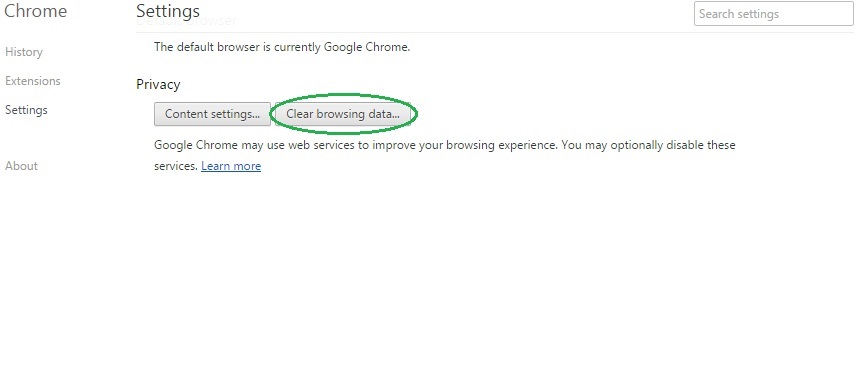
- Scroll down, click on Show Advanced Settings and then select Clear browsing data. Just to be sure, tick everything and clear the data.
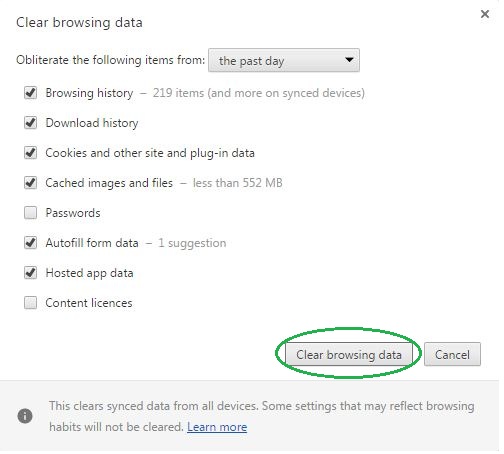
- Now, in the left pane, go to Extensions and look through all extensions that are integrated within your browser. If you notice any suspicious add-on, disable it and then remove it.
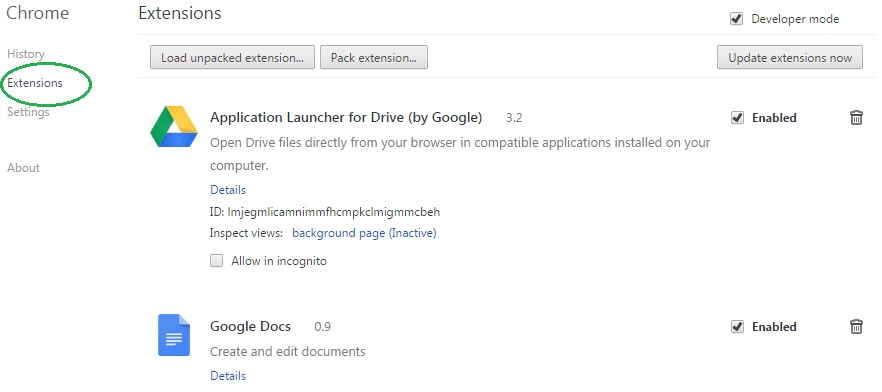
- Firefox users:
- Similarly to Chrome, go to the main menu and select Add-ons and then Extensions.
- Remove any suspicious browser extensions that you may have even if they do not have the name Zeus on them.
- IE users:
- Go to Tools and select Manage add-ons.

- Click on all add-on types from the left pane and check if there is anything suspicious in the right panel. In case you find anything shade, make sure to remove it.
IV – Removing Shady processes
- Go to your start menu, type Task Manager in the search field and from the results open View running processes with Task Manager.

- Thoroughly look through all processes. The name Zeus might not be there, but if you notice any shady looking process that consumes high amounts of memory it might be ran by the unwanted program.
- If you spot the process ran by Zeus, right-click on it, open its file location and delete everything in there. Then go back to the Task Manager and end the process.

V – DNS check
- In the start menu search box write View Network Connections and open the first result.
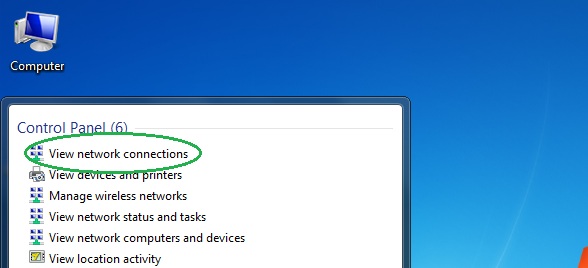
- Right-click on the network connection you are using and go to Properties.

- Select Internet Protocol Version (TCP/IPv4) and click on Properties.

- If Obtain DNS server addresses automatically is not checked, check it.
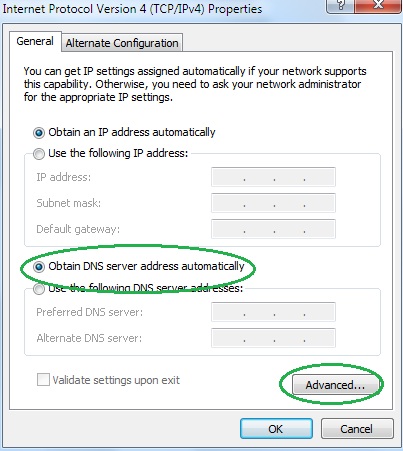
- Go to Advanced and select the DNS If there is anything in the DNS server addresses field, remove it and click OK.

- Click OK on the rest of the opened windows.





Leave a Reply